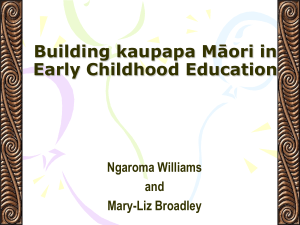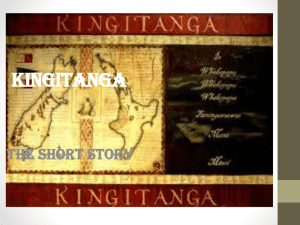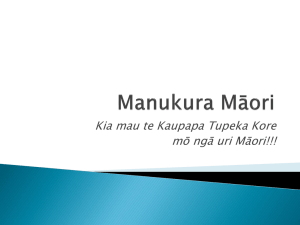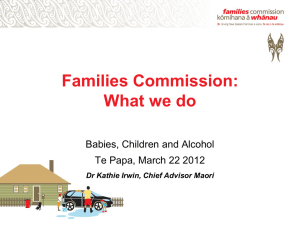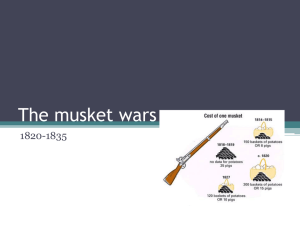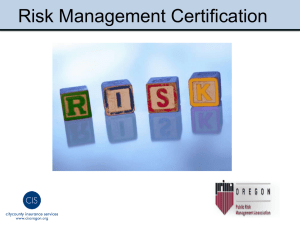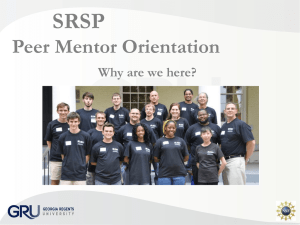Tamaiti Whangai Weltec Presentation B3 SSCC 2014
advertisement
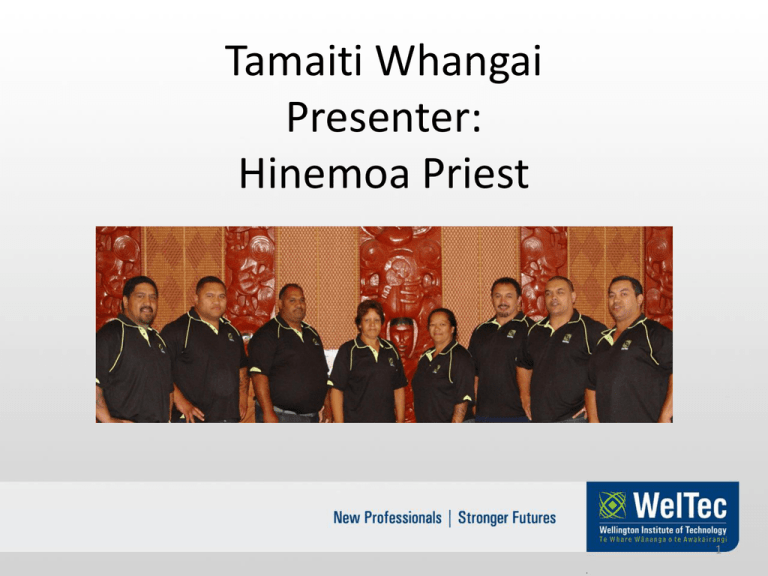
Tamaiti Whangai Presenter: Hinemoa Priest 1 WelTec/Tamaiti Whangai Academy Background • Wellington Institute of Technology has a goal to support Māori students to achieve. • The organisation has a vision and mission to achieve parity of outcomes for Māori students by 2015. • Improvement in Māori student outcomes has been a result of many changes to the way and manner in which Māori are supported at WelTec. 2 WelTec/Tamaiti Whangai Academy Background • WelTec and Te Runanganui o Taranaki Whanui - joint investment since 2008 • Catalyst to creating positive change • Te Runanganui o Taranaki Whanui and WelTec acknowledge the importance of working co-operatively to ensure all Māori students are provided with an educational experience that is meaningful and will lead them onto further study or employment. • Working co-operatively will assist Te Runanganui achieve their educational aspirations for their Rangatahi and build iwi workforce capability. • MoA's exist between Wellington Institute of Technology, Te Runanganui o Taranaki Whanui and Waiwhetu Marae. 3 2012 External Review A 2012 external review by Dr Rawiri Taonui (AUT) states: 1. “The combination of foresight and flexibility reflects in the good relationship nurtured with mana whenua in the Hutt Valley. This year WelTec renewed a Memorandum of Understanding (MOU) with Te Rūnanganui o Taranaki Whānui first signed in 2008. The relationship with mana whenua gave rise to the Tamaiti Whāngai Māori Student Support programme in 2008 that now stands Centrepiece to Māori student support at WelTec” (Taonui, 2012, p. 4). 2. “Brought forth from the relationship between WelTec and mana whenua Te Rūnanganui o Taranaki Whānui, the Tamaiti Whāngai Academy vehicle for Māori student support at WelTec is unique. Few Māori support mechanisms are born of similar links. Tamaiti Whāngai is also very effective. A comparative survey of historical course and qualification completion rates at WelTec and with other ITPs indicates Tamaiti Whāngai has made a meaningful contribution to closing gaps between Māori and all students in course and qualification completions at WelTec. 3. Few other Māori student support programmes produce similarly robust data on outcomes” (Taonui, 2012, p. 10). 4 Tamaiti Whangai Staff Staffing increased from 3 in 2008 to 8 in 2013 Hinemoa Priest Kaiwhakahaere David Lomax Team Leader Barry Te Whatu Rangi Luke Tame Ngaheke Errol Weston Susan Luke Tamaiti Whangai Mentor Tamaiti Whangai Mentor Tamaiti Whangai Mentor Tamaiti Whangai Mentor Admin and Tamaiti Whangai Mentor Arnold Lomax Work Broker 5 Statistical Overview 2010 2011 2012 2013 Māori Participation 17% 18% 19.1% 17.5% Māori Course Completion 67% 68% 76% 75% All students 75% 76% 81% 81.5% 6 Course Completion Rates Level 2011 2012 2013 Māori All Māori All Māori All Level 2 61% 63% 74% 76% 75% 78% Level 3 70% 77% 73% 81% 78% 83% Level 4 66% 79% 77% 84% 67% 82% Level 5 73% 78% 81% 86% 77% 81% Level 6 64% 74% 77% 78% 72% 76% Level 7 79% 81% 79% 83% 77% 83% Total 68% 76% 76% 81% 75% 81% 7 Aims of Tamaiti Whangai Educational Outcomes • Improved education attainment at tertiary level; • Skills development including achieving sport, social and employability skills; • Increased employment and a consequent reduction in unemployment; 8 Aims of Tamaiti Whangai Social Outcomes • Improved health outcomes including a reduction in misuse of alcohol and drugs; and • Increased uptake of community development initiatives including leadership, participation in mentoring, support and advocacy activities by young people. 9 What makes Tamaiti Whangai Unique? Relationships • • • • Partnership approach and shared vision Inter-agency support Buy-in from institution staff Māori Trade Training 2014 Pastoral • • • • Mentoring, cultural, academic and pastoral support Monitoring and reporting of achievement by the Tamaiti Whangai team Assistance with goal setting and work ready preparation Provision of strength based initiatives – Tama Toa, Whanau Sessions 10 What makes Tamaiti Whangai Unique? Kaupapa Māori • By Māori for Māori • Holistic wrap around support • Staff Development – Bachelor of Youth Development • Inclusion of whanau throughout the educational journey 11 Challenges • Maintaining an iwi-led approach • Maintain staffing levels • Securing funding to ensure programme is sustainable • Managing relationships with funders and funding institutions • Maintaining achievements • Managing future growth 12 Questions/Comments 13

